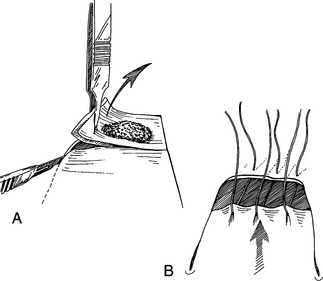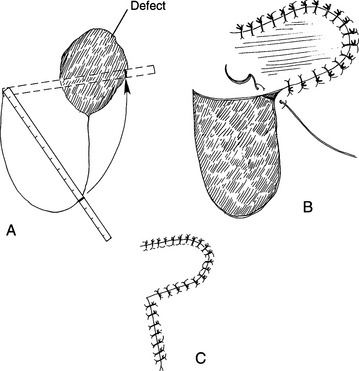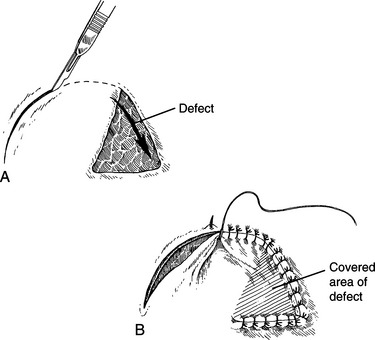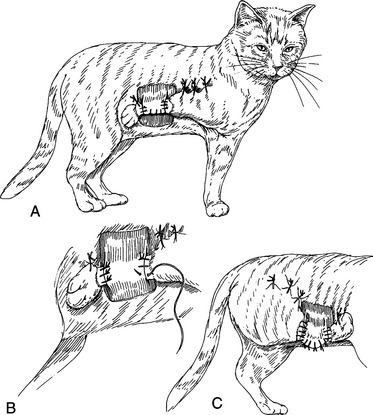Chapter 57 Selected Skin Graft and Reconstructive Techniques
Large skin wounds can occur (1) from trauma directly to the skin or to its blood supply; (2) secondary to necrotizing skin diseases (see Chapter 49); and (3) after removal of large skin, subcutaneous, or body wall neoplasms. Most open wounds eventually heal by the formation of granulation tissue, wound contraction, and epithelialization. Skin flaps or grafts are indicated when wound healing is either not progressing or will take a very long time for completion. Full-thickness skin is necessary to prevent mechanical problems caused by repeated trauma (e.g., in the dorsum of the leg or paw). Skin reconstruction is also necessary if the open wound is so large it will cause significant patient morbidity or wound contracture is likely to cause a significant problem (e.g., the wound is over a joint and the scar limits full extension and weight-bearing). Skin flaps are usually preferred over skin grafts because they are simpler to perform and have a higher success rate. However, if a skin flap is not feasible due to lack of adjacent skin (such as the distal limb), consider a skin graft.
This chapter describes practical methods of reconstructing skin using skin flaps and grafts. More complicated methods of skin grafting that require specialized skill or equipment, such as using a dermatome for split-thickness skin grafts, microvascular flap transfer, or tube grafts, are not discussed in this chapter. Primary closure of skin wounds is reviewed in Chapter 55, and open wound management in Chapter 56.
SURGICAL ANATOMY
Skin
The skin is composed of the epidermis and dermis.
Cutaneous Muscles
Blood Supply to the Skin
SKIN FLAPS
Random Subdermal Flaps
Indications
Advancement, Rotation, and Transposition Flaps
Direct Distant Pedicle Flaps
Preoperative Considerations
Surgical Procedure
Equipment
Technique
Advancement or Transposition Flaps
Stay updated, free articles. Join our Telegram channel

Full access? Get Clinical Tree






